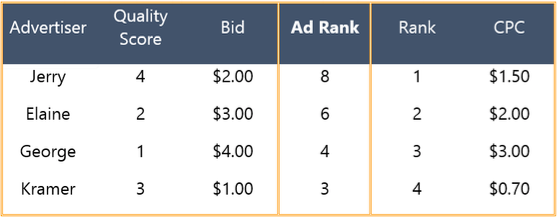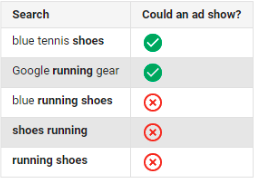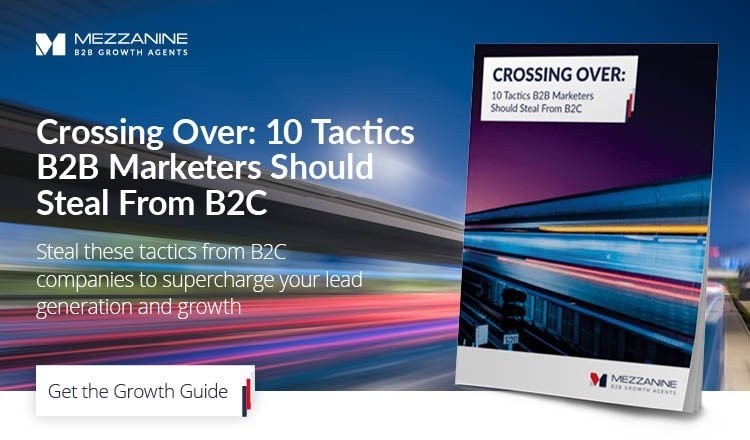How B2B Companies Can Measure SEM Success

Search engine marketing (SEM) lets you engage and nurture prospects throughout the conversion funnel. According to WordStream, 41% of all search engine clicks go the top three paid ads on the search results page. SEM can be effective at every stage of the buyer’s journey, but the way you measure success should reflect your current business goals. For example, if your focus is growing brand awareness, you should pay close attention to impressions. This article explores which metrics B2B companies can use to measure success of their SEM efforts, and how each metric aligns with your overall business goals.

1. Ad impressions measure brand awareness
Ad impressions measures when your ad is shown on a search engine results page. Impressions are the best indicator of your visibility on search engines, and key for evaluating your brand awareness efforts. Though impressions are a positive metric, it’s important to balance impressions against clicks. Google uses the impression-to-click ratio to assign its Ad Quality Score, but it can cause your cost-per-click and search results ranking to fluctuate. For example, search engines penalize advertisers that have with a high number of ad impressions but relatively few clicks. An imbalance in this area suggests low-quality or irrelevant ads.

(Source)
Top-performing SEM campaigns have lower impressions but higher clicks. Assess your impression-to-click ratio to help you optimize your ad copy and keywords for your ad groups.
2. Ad impressions share
Ad impressions share is the percentage of impressions that an ad received divided by the total number of impressions it could have received. This metric indicates if there’s an opportunity to increase spending on a performing keyword group to drive more traffic and conversions.
For example, if your campaign budget shows a 10% ad impression share, your ad was only included in one-tenth of relevant queries. This means that you could spend up to 90% more on that keyword group.
It’s important to measure your ad impression share against your broader goals – for example, if you are looking to build brand awareness from your SEM campaigns, success may be measured by how consistently you appear for any search term that relates to your business.
Look to increase your impression share in top-performing keyword groups, as these are driving the highest ROI.
3. Click-through rate
Click-through rate (CTR) measures the percentage of people who visit your site after seeing your ad. In other words, CTR indicates whether your ads are relevant to the searcher. A high CTR generally is predictive of conversions and on-site engagement – if people are interested enough to click-through to your site, they demonstrate a degree of purchasing intent. CTR is also a key factor in your ad Quality Score. The higher your CTR – the number of clicks an received divided by the total number of impressions – the better your score. This ultimately creates. The average CTR for Google Adwords is around 2%, though your campaign type, keyword group, and industry can influence this number. When measuring success based on CTR, your business should experiment with A/B testing to see which formatting, ad copy, and tone resonate best.
4. Wasted spend
Wasted spend is the money spent on keyword terms that don’t produce results. Though wasted spend is certainly a negative for your business, you can use it as an informative measure to refine your SEM campaigns for optimal engagement. Reasons for wasted spend vary – your ad was displayed in an irrelevant search query, your chosen keyword group is too broad, or your copy and formatting aren’t optimized for conversion. To avoid wasted spend for irrelevant keywords, you can use the negative keywords function in Google to filter out terms you know have low conversion. For example, if you add “running shoes” as a negative keyword to your campaign, Google Ads won’t show your ad for any query using that keyword phrase.
Example: Negative Broad match keyword: running shoes

(Source)
Unfortunately, insight about which terms can be considered wasted spend and which contribute to conversions usually occur after you have paid for a campaign. It’s important to start tracking your conversion rates from the beginning of a SEM campaign to quickly understand which of your efforts are wasted spend.
5. Page depth and time spent on site
Page depth and time spent on your site help you to understand how people engage with your site after clicking-through from an ad. Page depth link shows the number of pages visited during a single browser session and how long the user spent on each page. Looking at time on site and page depth gives you a sense of the visitor’s intent. It’s up to your company to create an intuitive path to relevant resources and pages that facilitate more time on your site and increase the likelihood that people convert on a purchase. To evaluate the engagement of your SEM campaigns, use page depth metrics from organic traffic as your benchmark. Typically, a strong SEM campaign should meet or exceed the engagement metrics of organic search. If you experience high click-through rates but weak page depth, adjust your ads to deliver a more relevant experience.
The Most Valuable SEM Metrics for B2B Companies
Measuring the success of your SEM efforts depends on your broader company goals. Make sure you map which functions you plan to support through your SEM campaigns and use metrics that reflect those objectives. Use these markers to tweak your ad copy, keyword groups, and website to find success with SEM.
This blog has been contributed by Grayson Kemper, Senior Marketing Analyst for Clutch, the leading marketplace for B2B services. He specializes in search engine marketing research.
.png?width=2361&height=488&name=Mezzanine%20Logo_Horiz_RGB_on%20blue%20(1).png)

